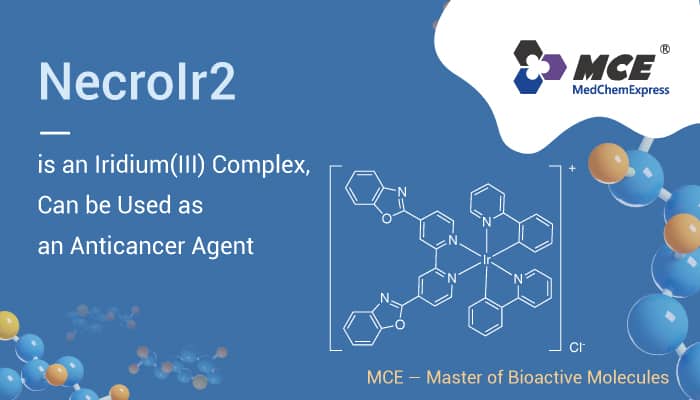Inorganic elements play crucial roles in biomedical processes. Many inorganic elements such as transition metals have anticancer activities. Even though metal complexes are making progress against cancer, cisplatin (CDDP) remains the most widely used first-line chemotherapeutic drug for various cancers. Drug resistance to cisplatin significantly limits its clinical use in cancer. Necroptosis is a mode of programmed cell death (PCD) in cancer therapy. Necroptosis induced by chemotherapeutic agents can combat drug-resistant cancers.
NecroIr2 is an iridium(III) complex, that serves as a necroptosis inducer in Cisplatin-resistant lung cancer cells (A549R).

NecroIr2 has potent anticancer activity with an IC50 value of 0.48 μM. The mitochondrion is a key organelle in the control of cell survival, differentiation, and death. NecroIr2 can selectively accumulate in mitochondria, leading to oxidative stress and loss of mitochondrial membrane potential (MMP).
On the other hand, NecroIr2 can induce necroptosis in A549R cells. Firstly, NecroIr2 increases the levels of phospho-RIPK1 (p-PIPK1), total receptor-interacting serine-threonine kinase 3 (PIPK3), p-PIPK3 and further causes the tetramerization of mixed lineage kinase domain-like pseudokinase (MLKL) induce RIPK3- and MLKL-dependent necroptosis. Secondly, rupture in the cellular membrane occurs during the process of necroptosis. NecroIr2 can damage the plasma membrane of the cells to cause extracellular calcium influx and leakage of lactate dehydrogenase (LDH). Most importantly, Necrolr2 can interfere with the progression of the cell cycle and cause cell cycle arrest in the GO/G1 phase by the downregulation of cyclin-dependent kinases (CDK1, CDK2, CDK4, and CDK6) and cyclin A2 and D2.
To sum up, Necrolr2 is a potential antitumor agent with the combined effect of necroptosis and cell cycle arrest that can be used in the research of drug-resistant cancer cells.
Reference:
Ruilin Guan, et al. Inorg. Chem. Front., 2021,8, 1788-1794